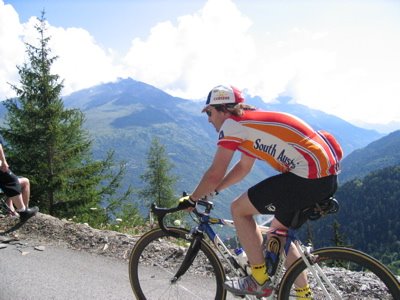Thursday, September 13, 2007
About Me

- Name: GKK
- Location: Tokyo, Tokyo, Japan
I live in Tokyo and fill most of my time with running (when I'm not working). I'm pretty new to running - although I have run the London Marathon and I've recently got a bit competitve in 5km runs (my best is a 17.33 set on the track). I don't cycle so much these days, but I've ridden all around the world, including Manchester Velodrome; Herne Hill Velodrome in London; the Adelaide 'Superdrome'; Launceston 'Silverdome' and the roads of Australia, Belgium, Britain and France. These days I ride just for fun and fitness - somehow I own a better bicycle now than I did when I used to race. 私は東京に住んでいます。仕事をしている時以外は、いつも走っているか、サイクリングをしています。オーストラリアやヨーロッパで自転車のレースに出場したことがあります。今は私の自転車を6.8kgの重さにまで軽量するため、改良中です。


1 Comments:
The difficult thing is that now that it's cooler there aren't as many natural brakes on the system. The Lydiard approach to base building (in the early phase) is to run a pace that is about as fast as you can go for 8 to 12 km but can fully recover from to do it all again the next day. This is a really key concept; the ability to be recovered to do the same thing the next day and the next, and the next. Ingo tried to find this pace by running 28 days straight earlier in the year. But he put more emphasis on the "as fast as you can" and did not adequately consider the "and be fully recovered by the next day" and ended up with some injuries. Lydiard exponents also say "train don't strain". Meaning that you shouldn't be pushing yourself into the red in your runs. The fact you ran 32 minutes instead of 40 sounds like you ran a fixed course. It would probably be better that you run to a fixed time, i.e. 40 minutes. If it means running 500 m past your house and then back again to get to the time, that's OK. Knowing that you have to keep going for a set amount of time might help you stay with a steady pace. Anyway, it's good to hear that the foot felt OK.
Post a Comment
<< Home